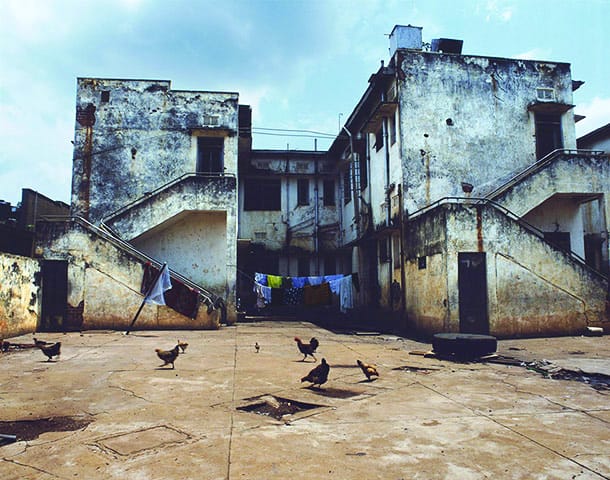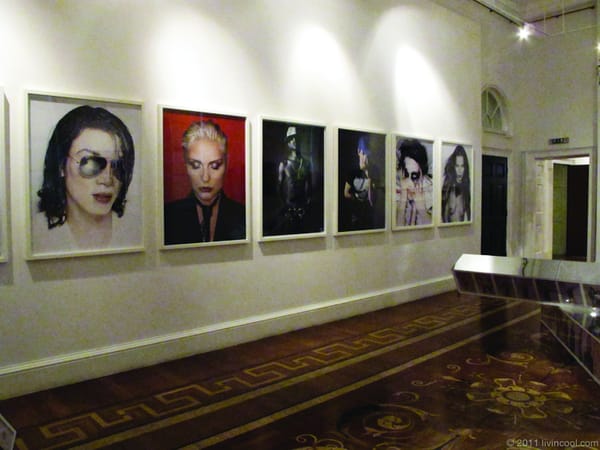Enter the Zarina
Emotions run high at film artist and photographer Zarina Bhimji’s retrospective at Whitechapel

To coincide with the world premiere of her latest film installation ‘Yellow Patch’, the Whitechapel Gallery in East London is currently showing the first major retrospective of the artwork of Zarina Bhimji. Born in Uganda to Indian parents, Bhimji left for Britain in the early 1970s to escape the brutal regime of Idi Amin. This complex cultural history cannot help but heavily influence her work, and partly explains her passionate focus on themes of loss, pain, and human displacement.
The exhibition opens with some of Bhimji’s earlier work, a collection of photographs from her series, ‘Love’. Taken on her visits back to Uganda, the photographs capture with vivid and harsh intensity the scenes of decay and abandonment she finds there. In one, an enormous chandelier lies disused, dominating the tiny room it now inhabits as the bright light refracting through its glass hints at the awe it would have once inspired. In another, a family home, bathed in warm sunlight, sits derelict and empty, poignant due to the obvious, aching absence of the family who once lived there. This idea, of places now empty where there once was such a strong human presence, echoes throughout the collection, from the mountain of abandoned paperwork that fills up one image, each file the ghost of a person now forgotten, to the mysterious bag of hypodermic syringes that invades and taints the image of an otherwise barren, natural scene. It is with great talent that Bhimji manages to somehow capture the intense beauty in such desolate and emotive moments.
The emotive power and haunting beauty is undeniable
The climax of the exhibition, the greatly anticipated ‘Yellow Patch’, results from Bhimji’s journey further into her own past, to India, the home of her parents. In my eyes it was far less successful. Where ‘Love’ was subtle yet expressive, the film installation seemed simultaneously painfully obvious and frustratingly abstract. Repetitive close up shots of derelict buildings and abandoned objects gained little from the disjointed sounds that accompanied them, and offered none of the personality and the evidence of humanity that her earlier photographs captured so well. Brief moments of beauty or interest, such as the looming wreck of an unfinished ship, were utterly desensitised by the slow and passive movement of the camera that panned across them. On some intellectual level, I was intrigued by some of the more unusual images, and I appreciated the occasional contrast between the bustling movement captured in the audio against the total stillness of the visual. But I was utterly unable to connect emotionally with the installation. I found myself yearning for some kind of narrative to pull me through it, a connecting thread that I sensed was there but could not cling on to as image after image slid before my eyes. Perhaps I’m simply not emotionally intelligent enough to personally respond to such a restrained piece – but if that’s the case, then is it really good art?
I found myself similarly unappreciative of the two other smaller collections on display, ‘Cleaning the Garden’ and ‘She Loved to Breathe – Pure Silence’. ‘Cleaning the Garden’, one of Bhimji’s earlier collections, apparently contrasting English and Spanish traditions of formal gardening, seemed to me to have no strong central theme or message, providing aesthetically pleasing but ultimately impersonal photographs. Meanwhile, ‘She Loved to Breathe’ came across as uncharacteristically unsubtle, with an arguably unnecessary addition of chilli and turmeric scattered on the floor beneath what on their own were powerful and cleverly composed images, abstractly referring to the trauma of Asian immigrant women in the UK forced to submit to virginity tests in the 1970s.
Despite these criticisms, I’d still recommend the exhibition, even if only for ‘Love’. The emotive power and haunting beauty of some of that collection is undeniable, and as for the others... Well, perhaps I just didn’t ‘get’ them.
Zarina Bhimji at the Whitechapel Gallery until March 9








